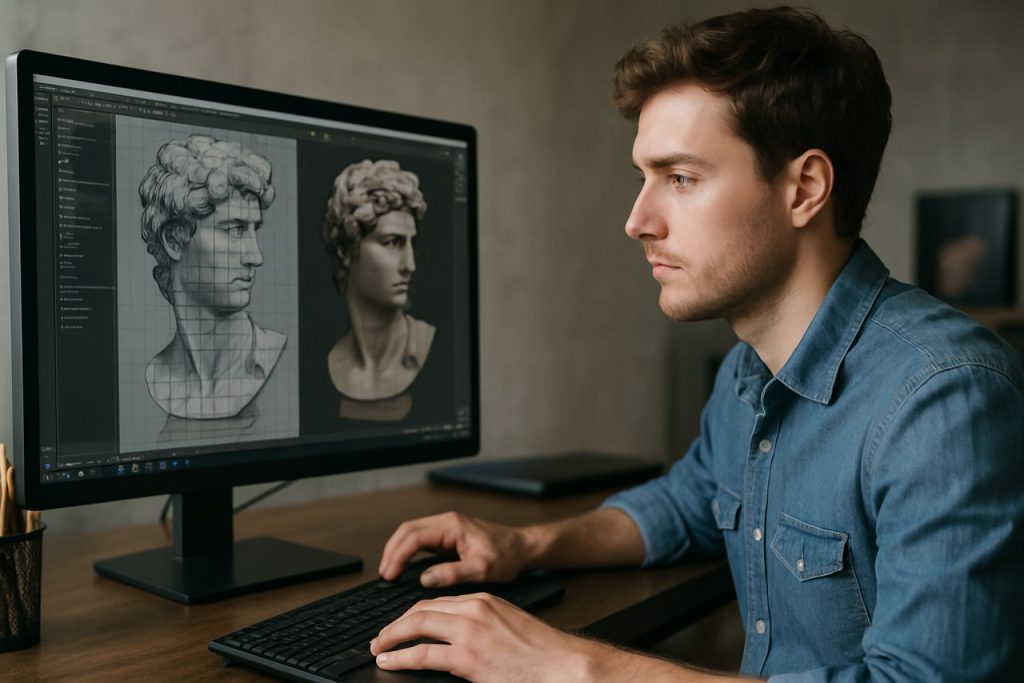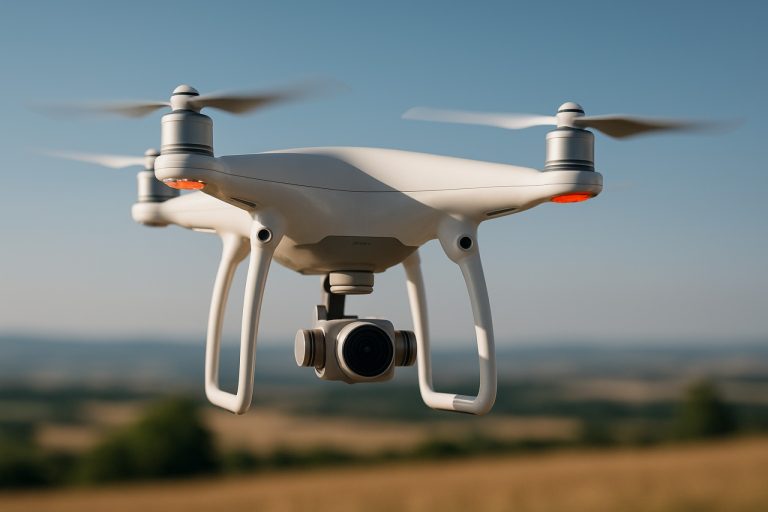
Unlocking the Power of Box Modeling in 3D Computer Graphics: Discover the Essential Workflow That’s Transforming Digital Art and Animation. Learn How This Foundational Technique Shapes the Future of Creative Design.
- Introduction to Box Modeling: Origins and Core Concepts
- Essential Tools and Software for Box Modeling
- Step-by-Step Box Modeling Workflow Explained
- Advantages and Limitations of Box Modeling
- Comparing Box Modeling to Other 3D Modeling Techniques
- Real-World Applications: From Games to Film and Beyond
- Expert Tips and Common Pitfalls in Box Modeling
- Future Trends: The Evolution of Box Modeling in 3D Graphics
- Sources & References
Introduction to Box Modeling: Origins and Core Concepts
Box modeling is a foundational technique in 3D computer graphics, widely used for constructing complex models from simple geometric shapes. The method traces its origins to early polygonal modeling workflows, where artists sought efficient ways to create detailed forms without starting from scratch. At its core, box modeling involves beginning with a primitive—typically a cube or rectangular box—and incrementally refining its shape through a series of operations such as extrusion, subdivision, and edge manipulation. This approach allows for rapid prototyping and intuitive control over the model’s topology, making it especially popular in character and object modeling for animation and games.
The core concept behind box modeling is the iterative transformation of a low-resolution mesh into a high-resolution, detailed model. Artists start by blocking out the basic proportions and silhouette, then progressively add detail by subdividing faces and adjusting vertices, edges, and faces. This non-destructive workflow enables flexibility, as changes can be made at any stage without significant rework. Box modeling is often contrasted with other techniques like sculpting or spline modeling, offering a balance between control and speed.
Modern 3D software packages such as Autodesk Maya, Blender Foundation, and Maxon Cinema 4D provide robust toolsets for box modeling, supporting both beginners and professionals. The technique remains a staple in the industry due to its accessibility and effectiveness in shaping a wide variety of digital assets.
Essential Tools and Software for Box Modeling
Box modeling relies heavily on the capabilities and features of modern 3D software, which provide artists with the essential tools to efficiently create and manipulate polygonal meshes. Among the most widely used applications, Autodesk Maya and Autodesk 3ds Max stand out for their robust polygon modeling toolsets, including intuitive extrusion, beveling, and subdivision surface controls. These programs offer non-destructive workflows and customizable interfaces, making them suitable for both beginners and professionals.
Another popular choice is Blender Foundation, an open-source platform that has gained significant traction due to its comprehensive modeling suite and active community support. Blender’s box modeling tools include advanced selection modes, loop cuts, and modifiers like Mirror and Subdivision Surface, which streamline the process of shaping and refining models from basic primitives.
For artists seeking a more sculpting-oriented approach, Maxon Cinema 4D offers a user-friendly interface and powerful modeling features, such as parametric primitives and procedural workflows. Additionally, Foundry Modo is recognized for its direct modeling tools and flexible mesh editing capabilities, making it a favorite among professionals in the gaming and film industries.
Essential tools within these software packages typically include selection and transformation tools, edge and face manipulation, subdivision controls, and symmetry functions. The integration of these features allows for rapid prototyping and iterative refinement, which are crucial in the box modeling workflow.
Step-by-Step Box Modeling Workflow Explained
Box modeling is a foundational technique in 3D computer graphics, enabling artists to create complex models from simple geometric shapes. The workflow typically begins with a primitive shape, most commonly a cube or box, which serves as the base mesh. The process unfolds through a series of systematic steps designed to incrementally refine the model’s form and detail.
The first step involves blocking out the basic proportions by scaling and moving the box’s faces, edges, and vertices to match the desired silhouette. Once the rough shape is established, the artist uses subdivision—dividing faces into smaller sections—to add more geometry where detail is needed. This is often achieved through tools like the “loop cut” or “insert edge loop,” which allow for precise control over the mesh’s topology.
Next, extruding faces is a key operation, enabling the creation of limbs, protrusions, or other features by pulling out new geometry from the existing mesh. Throughout the process, symmetry tools are frequently employed, allowing changes on one side of the model to be mirrored automatically, which is especially useful for character modeling.
As the model becomes more refined, artists focus on adjusting edge flow to ensure smooth deformations during animation. This may involve adding supporting edge loops to sharpen or soften transitions. The final steps include smoothing the mesh, either by applying a subdivision surface modifier or manually refining the geometry, to achieve the desired level of detail and surface quality.
For further reading on box modeling workflows and best practices, resources from Autodesk and Blender Foundation provide comprehensive guides and tutorials.
Advantages and Limitations of Box Modeling
Box modeling is a widely adopted technique in 3D computer graphics due to its intuitive workflow and accessibility for both beginners and professionals. One of its primary advantages is the ability to quickly establish the basic shape and proportions of a model using simple geometric primitives, such as cubes or rectangles. This approach allows artists to focus on the overall silhouette before refining details, making it particularly effective for character and hard-surface modeling. The iterative process of extruding, scaling, and subdividing faces enables rapid prototyping and easy adjustments, which can significantly speed up the early stages of asset creation (Autodesk).
However, box modeling also presents certain limitations. As the model becomes more complex, managing edge flow and maintaining clean topology can become challenging, especially when adding intricate details or organic forms. This can lead to issues such as non-manifold geometry or unwanted surface artifacts, which may complicate later stages like texturing or animation (Blender Foundation). Additionally, box modeling may not be the most efficient method for highly detailed or irregularly shaped objects, where sculpting or point-by-point modeling techniques might offer greater control and precision. Despite these drawbacks, box modeling remains a foundational skill in 3D workflows, valued for its speed and versatility in conceptualizing and blocking out models.
Comparing Box Modeling to Other 3D Modeling Techniques
Box modeling is one of several foundational techniques in 3D computer graphics, often compared to methods such as edge modeling, sculpting, and procedural modeling. Unlike box modeling, which begins with a simple geometric primitive (typically a cube or box) and incrementally refines its shape through subdivision and manipulation, edge modeling constructs forms by placing and connecting individual edges and vertices, offering more direct control over topology from the outset. This makes edge modeling particularly suitable for complex, organic shapes where precise edge flow is critical, such as in character facial modeling (Autodesk).
Sculpting, on the other hand, emulates traditional clay sculpting, allowing artists to push, pull, and smooth a dense mesh to achieve highly detailed and organic forms. While sculpting excels at creating intricate surface details, it often requires retopology to produce a clean, animation-ready mesh, a step less emphasized in box modeling workflows (Pixologic ZBrush).
Procedural modeling, as seen in tools like Houdini, leverages algorithms and node-based systems to generate complex structures and environments. This approach is highly efficient for creating large-scale or repetitive assets but can be less intuitive for artists seeking direct, hands-on control over individual forms (SideFX Houdini).
In summary, box modeling is valued for its intuitive, incremental approach and is especially effective for hard-surface objects and rapid prototyping. However, for highly detailed, organic, or procedurally complex models, alternative techniques may offer greater efficiency or control, depending on the project’s requirements.
Real-World Applications: From Games to Film and Beyond
Box modeling is a foundational technique in 3D computer graphics, widely adopted across various industries due to its efficiency and versatility. In the video game industry, box modeling is frequently used to create both characters and environmental assets. Its iterative approach—starting from simple geometric shapes and refining them into complex forms—enables artists to quickly prototype and adjust models to fit gameplay requirements. For instance, studios like Ubisoft and Electronic Arts utilize box modeling in the early stages of asset creation, allowing for rapid iteration before moving to more detailed sculpting or texturing phases.
In film and animation, box modeling plays a crucial role in the development of digital doubles, props, and set pieces. Major visual effects studios such as Industrial Light & Magic and Wētā FX employ box modeling to establish base meshes that are later refined for high-resolution rendering and animation. The technique’s non-destructive workflow is particularly valuable in collaborative environments, where multiple artists may need to adjust topology or proportions throughout production.
Beyond entertainment, box modeling finds applications in fields like product design, architecture, and virtual reality. Companies such as Autodesk integrate box modeling tools into their software suites, enabling designers to visualize and iterate on concepts efficiently. The adaptability of box modeling ensures its continued relevance as 3D graphics expand into new domains, from medical visualization to interactive education.
Expert Tips and Common Pitfalls in Box Modeling
Box modeling is a foundational technique in 3D computer graphics, but even experienced artists can encounter challenges that impact workflow efficiency and model quality. One expert tip is to maintain a low polygon count during the initial stages. Starting with simple geometry allows for easier manipulation and prevents unnecessary complexity, which can complicate later refinements and subdivision. As the form develops, gradually add edge loops and subdivisions only where additional detail is needed, such as around joints or facial features.
Another best practice is to use reference images extensively. Aligning your box model to orthographic views (front, side, and top) ensures accurate proportions and silhouette, which is especially crucial for character and product modeling. Additionally, experts recommend frequently checking the model’s topology. Clean, quad-based topology is essential for smooth deformations during animation and for avoiding shading artifacts. Tools like edge flow visualization and wireframe overlays can help identify problematic areas early.
Common pitfalls include over-modeling—adding too many subdivisions too soon—which can make the mesh difficult to edit and may introduce unwanted bumps or pinching. Neglecting to maintain symmetry is another frequent mistake; using symmetry or mirror modifiers can save time and ensure consistency. Finally, failing to plan for UV unwrapping and texturing can result in stretched or distorted textures later in the pipeline. Regularly previewing the model with basic materials or checker patterns can help catch these issues early.
For further guidance, resources from Autodesk and Blender Foundation offer comprehensive tutorials and documentation on box modeling best practices.
Future Trends: The Evolution of Box Modeling in 3D Graphics
Box modeling, a foundational technique in 3D computer graphics, continues to evolve in response to advancements in hardware, software, and workflow integration. One significant trend is the increasing use of procedural and AI-assisted tools that augment traditional box modeling workflows. These tools can automate repetitive tasks, suggest topology improvements, and even generate base meshes from concept sketches, allowing artists to focus more on creative decisions rather than technical constraints. For example, machine learning algorithms are being integrated into modeling suites to predict and optimize edge flow, which is crucial for animation-ready models (Autodesk).
Another emerging trend is the seamless integration of box modeling with sculpting and parametric modeling techniques. Modern 3D software now allows for non-destructive workflows, where artists can switch between box modeling, digital sculpting, and procedural modifications without losing mesh integrity. This hybrid approach is particularly valuable in industries such as game development and film, where rapid iteration and high-quality assets are essential (Blender Foundation).
Furthermore, real-time collaboration and cloud-based modeling platforms are reshaping how teams approach box modeling. These platforms enable multiple artists to work on the same model simultaneously, streamlining feedback and reducing production timelines. As virtual and augmented reality applications expand, box modeling tools are also adapting to support immersive, in-VR modeling experiences, making the process more intuitive and accessible (Unreal Engine).
In summary, the future of box modeling lies in smarter, more integrated, and collaborative tools that empower artists to create complex 3D assets with greater efficiency and creative freedom.
Sources & References
- Blender Foundation
- Maxon Cinema 4D
- Pixologic ZBrush
- SideFX Houdini
- Electronic Arts
- Industrial Light & Magic
- Wētā FX



